Apple HomePod (second generation) review: a sound investment
The HomePod is back and it sounds incredible for music and movies

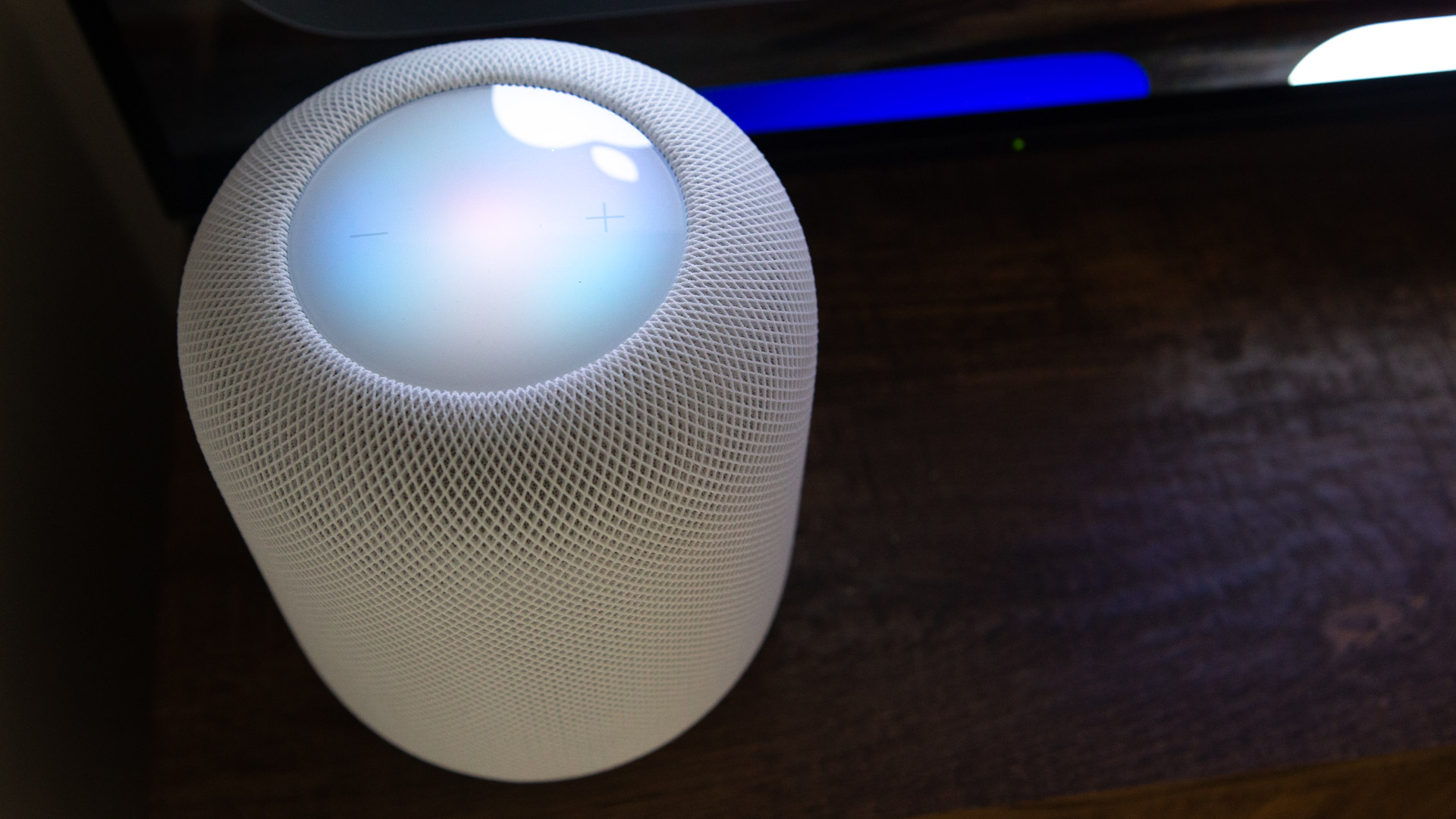
The second-generation HomePod provides jaw-dropping audio, whether listening to music or watching films through the Apple TV, and it only gets better with two of them. If you've already bought into the Apple ecosystem, this provides a premium experience all-round.
-
+
Stunning audio
-
+
Works perfectly with Apple TV
-
+
Now a proficient home hub
-
-
Bass can be a bit much
-
-
Requires other Apple products
-
-
Too tall to sit under your TV
Why you can trust T3

The first Apple HomePod was released back in 2018 but then discontinued in 2021, leaving just the HomePod mini in its smart speaker offering. Thankfully though, the HomePod is back with a second generation, to cater for those looking for a more premium Apple audio experience.
While not a lot appears to have changed with the new model, its integration into Apple's smart home ecosystem is much more pronounced. This makes the HomePod central to not just your music listening needs but also your home cinema and the automation of other devices in your network.
It's almost as if the HomePod was launched before its time, as now the second-generation speaker makes a lot more sense. This is still a device that caters purely to existing Apple users, but most of the niggles we had with it before have been solved through a series of software updates. There are also some internal design changes that on first inspection look like a downgrade, but in practice see the HomePod become even more impressive.
I've been using two of the second-generation HomePod devices paired with the latest Apple TV 4K to provide cinema sound. I've also used these devices to play music and control smart home devices. With the HomePod, Apple is ready to take on full smart home control, and it delivers audio that you can be truly proud of.
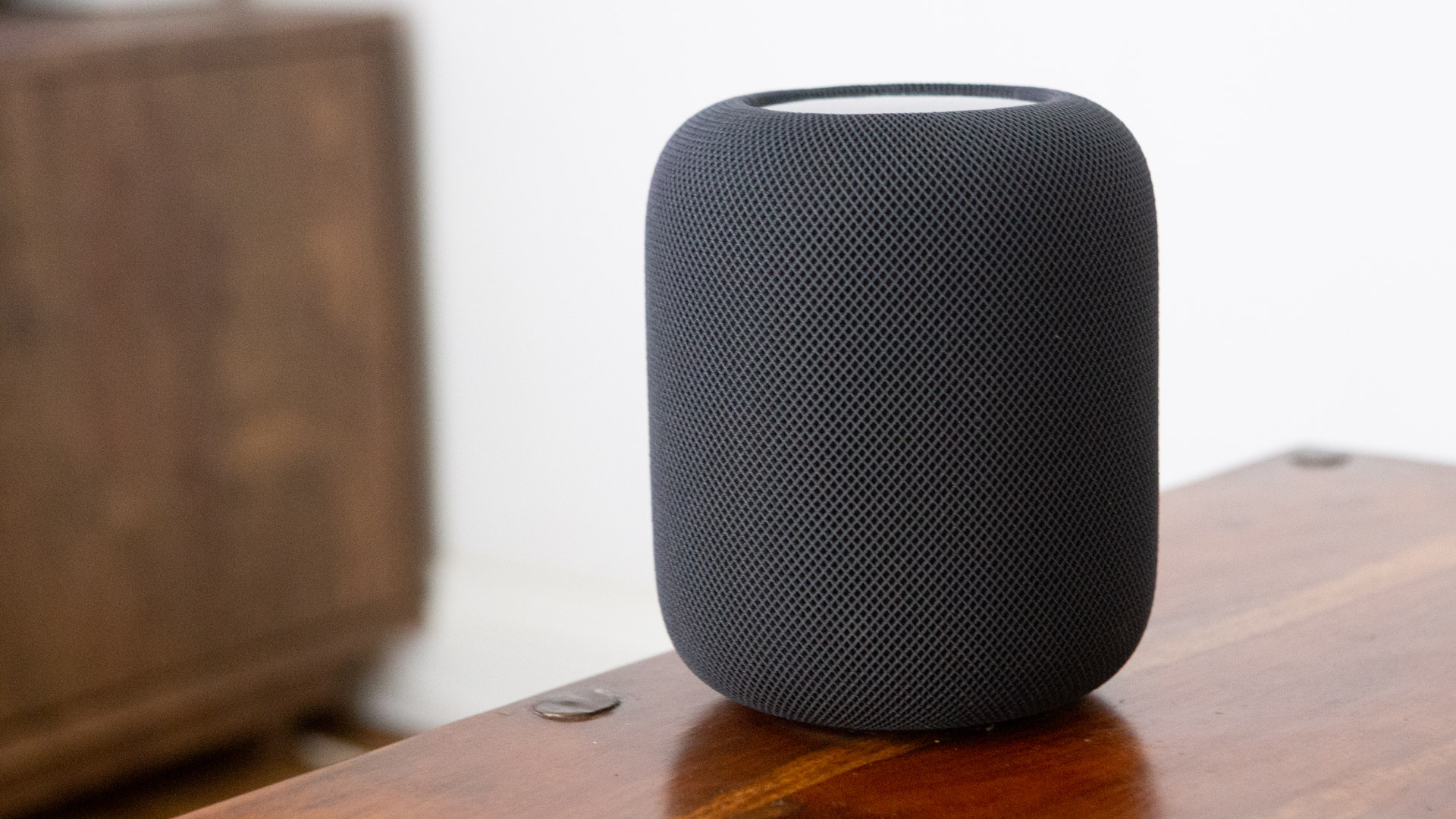
Price, availability and release date
The HomePod (second generation) was announced on 18th January. This was a day after the announcement of the new MacBook Pro M2 Pro and M2 Max, and the new Mac mini M2 Pro and M2 models.
The new model is available to buy from 3rd February, with pre-orders open in advance. It costs £299 / $299 / AU$479, which is cheaper than the initial £319/$349 launch price of the first generation. However, that did drop to £279/$299 a year later. If you're looking to buy two for the stereo pair, there's no discount or twin pack available right now.
That price positioning is interesting, as it's a good step above the Sonos One and Echo Studio but is significantly cheaper than the likes of the Sonos Five. It does feel like a sweet spot for a premium but affordable home speaker. Even if you're buying two, the price is still less than top end soundbars like the Samsung HW-Q990B or the Sonos Arc.
Get all the latest news, reviews, deals and buying guides on gorgeous tech, home and active products from the T3 experts
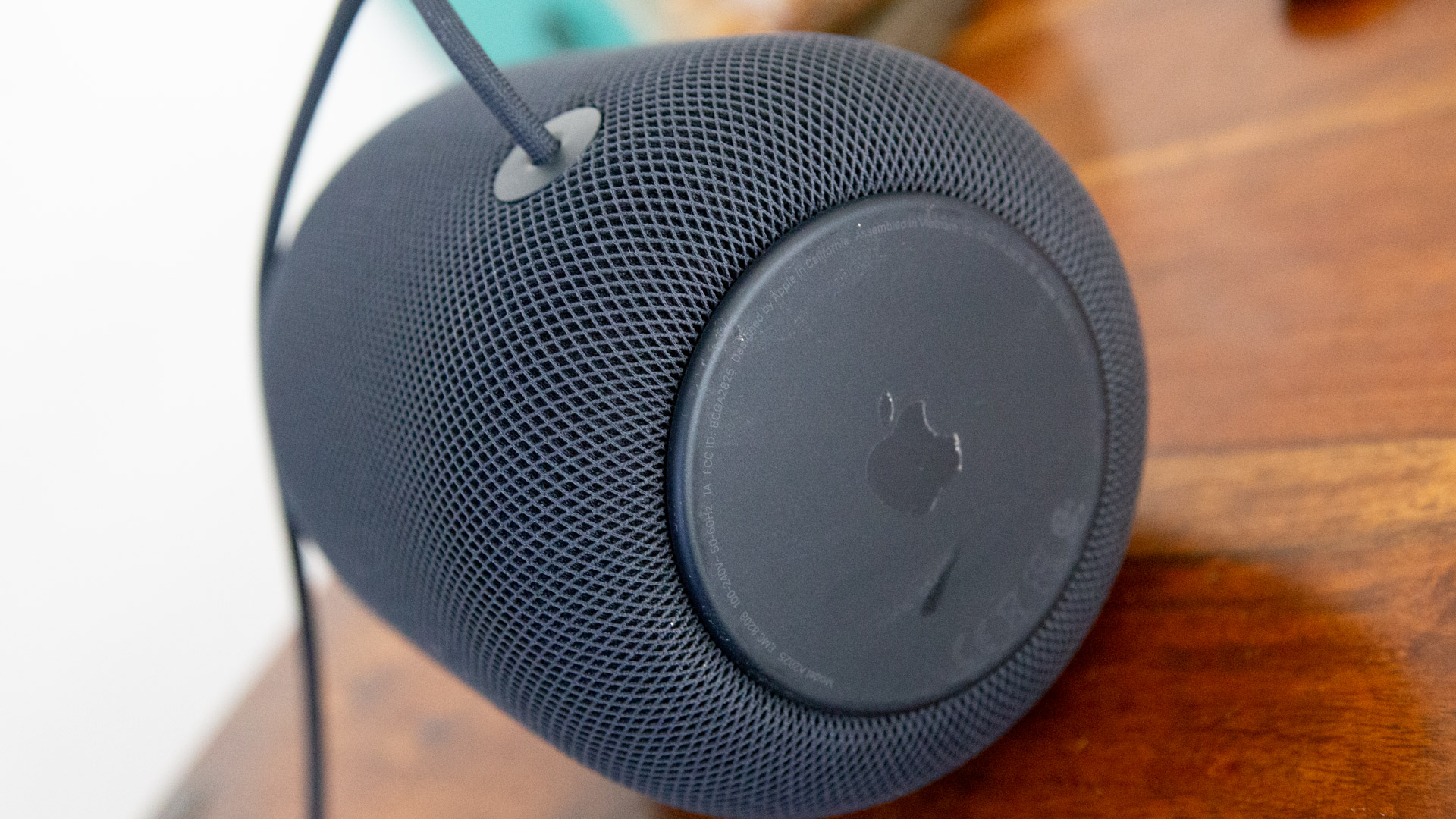
Design and build
The new HomePod is largely the same size and shape as the original model. Placed next to each other you'd need to look carefully to tell them apart. The second-gen model is slightly shorter at 168mm (6.6 inches) but the same 142mm (5.6 inches) wide. The base of the unit has changed slightly, now being completely flat rather than concave. Meanwhile, the top touch panel is set slightly recessed.
Weighing in at 2.3kg (5.16lbs) it's also slightly lighter than the original – due to some changes in the internals that I'll come to in a minute. That's still a significant weight for a speaker – more than the likes of the Sonos One or Denon Home 150 but considerably less than the Echo Studio or Sonos Five.
The touch panel on the top of the HomePod is a little more ambiguous that you might expect. The surface lights in different colours depending on what the device is doing – green for a phone call or listening, white when media is playing and multi-coloured when Siri is active. There's a plus and minus symbol to direct you of where to press to increase or decrease the volume, but otherwise media controls such as skipping tracks, play or pause are handled by a series of taps.
Personally I'd have loved to see more of a regular display with an Apple Watch OS here, allowing you to flip through functions and even scroll through song choices. Instead, the HomePod relies on either voice command or via the Home app on your iPhone, iPad or Mac. That said, if all you are using the HomePod for is as a speaker, the current panel is more than sufficient.
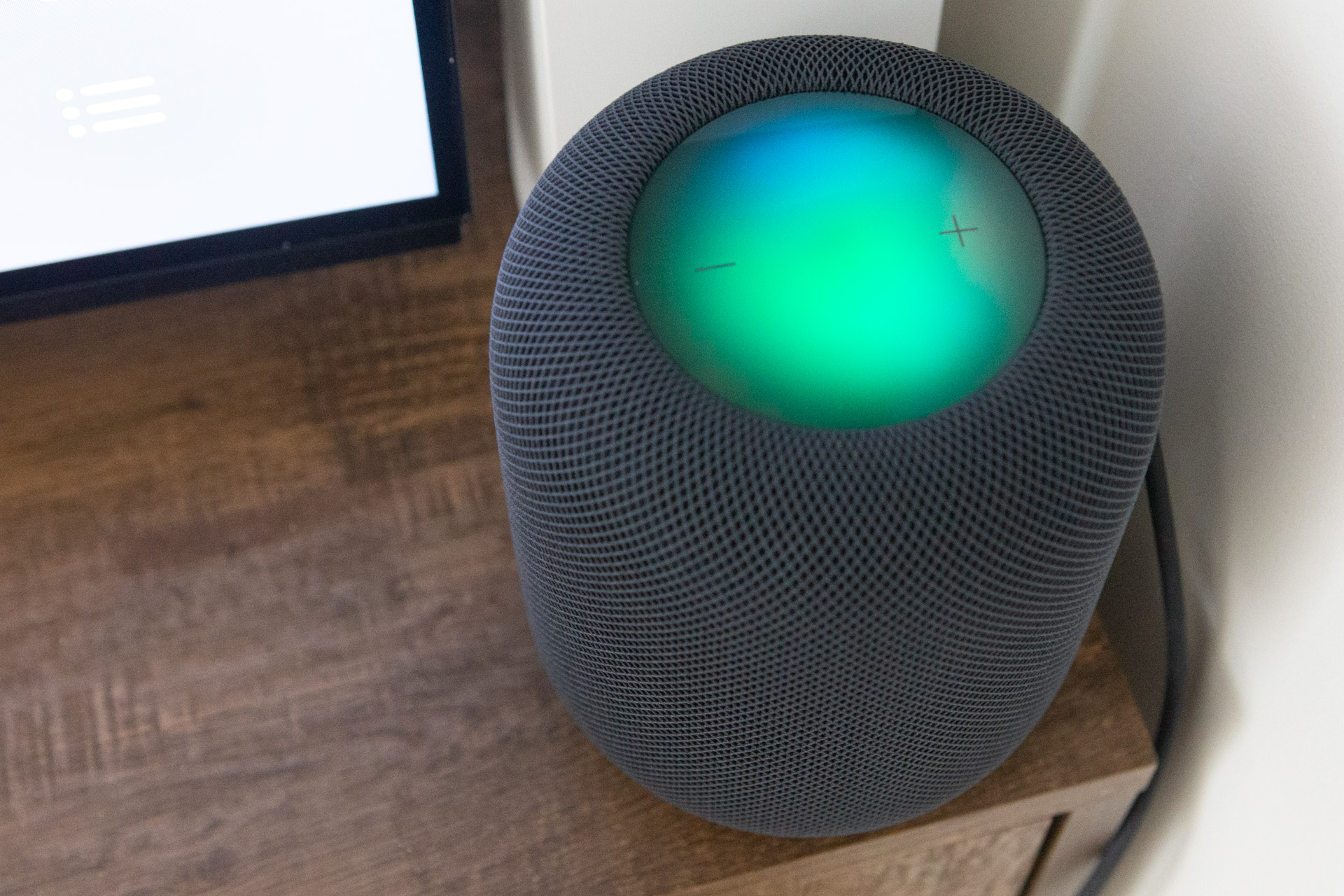
Features and operation
Setting up the HomePod is really straight-forward using another Apple device. Once the device is plugged in, it will chime to say it is ready to set up. Then, if you hold your iPhone close to the HomePod, a notification will appear on your iPhone screen to set up. Much like with the Apple Watch set-up, you then just the phone's camera to capture the top of the HomePod and it does the rest. The HomePod will then appear in your Apple Home app, where you can adjust the settings.
The easiest way to control the HomePod is using voice or with the Home app. Yes, you can use the touch panel on the top to change the volume, activate Siri or change tracks but just using the "Hey Siri" command is often much easier for simple commands (and means you don't need to walk over to it). The Home app gives you lots more control of the HomePod, including how it reacts to Siri controls, automations and audio settings.
There's no EQ option here, not even in terms of sound profiles, but there is the ability to reduce the bass. This is useful when using it for music or cinema sound late at night, as that bass can really travel.
From the Home app you can also pair two HomePod speakers to create a stereo pair, though these both need to be the same generation of HomePod, as you can't pair an older HomePod with a second-generation model. Once in a pair, they provide a much wider sound space for either music or movie sound.
You can also see the reading from the HomePod's temperature and humidity sensors in the Home app, even when you're not at home. You can then add automation based on these readings. So, if the temperature rises above or below a certain level, during a time of day and based on the people at home, you can have another connected accessory activate. For instance, I can choose to have my dehumidifier switch on, if the humidity rises above 60% when someone is at home.
One of my favourite features of the HomePod is that you can pair it with the Apple TV to deliver audio when watching shows and films. With both devices updated to the latest software version, the option to use the HomePod for sound will appear in the Apple TV menu. If you have paired two HomePods together, they will appear as a set. You will then be able to control the volume of the HomePod using your Apple TV remote. If your TV has an eARC HDMI port, you can have all of your TV audio coming through the HomePod speakers (note that to do that you need to activate the audio return channel in the Apple TV's audio output).

Sound quality
Inside the HomePod is packed with speakers and microphones. There's a 20mm high-excursion woofer for bass, five tweeters in a beam-forming array for the detail, a four-microphone array for the Siri requests and to monitor the EQ, as well as an internal bass-EQ microphone to make sure it delivers the right amount of bass for the volume and track.
All of this is controlled by Apple's S7 chip, the same sensor used in the Apple Watch Series 7. Compared with the original HomePod, this model has two fewer tweeters and two fewer microphones. The original model also used the A8 chip from the 2014 iPhone 6. Obviously, the S7 chip, (which uses dual cores based on the A13) while smaller, is much newer and just as capable when it comes to the HomePod's requirements.
As to whether the reduction in microphones and tweeters have affected the sound quality and response, I can confirm that this is certainly not a step backwards.
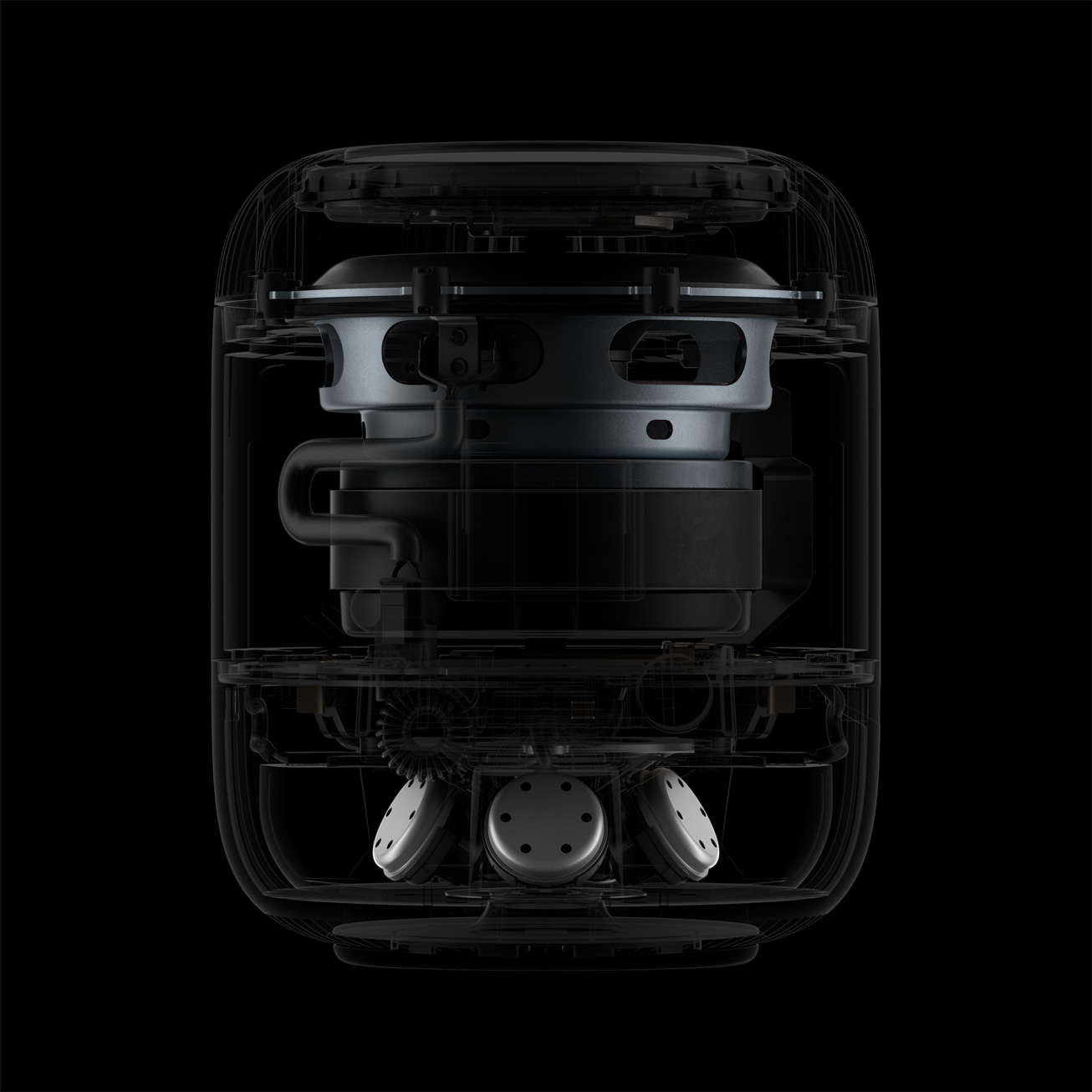
What's clear from the first notes the HomePod delivers is just how big the sound that it creates is. For such a relatively small speaker, the sound instantly fills the room and then hits you like a hammer as it provides the bass.
There's great separation on audio tracks, especially lossless Apple Music content that allows you to hear every instrument crisply, no matter the volume it's being played at. The experience is excellent with a single HomePod but just gets even better when paired with a second unit. As well as a stereo pair, you can add in other speakers on your network, so I was even able to play the same content on my Sonos Five at the same time.
The bass really is big on the HomePod. Not in a shaking your windows or distorted way, but just from a sheer volume point of view. I found with movie content, for regular watching I often turned on the 'reduce bass' function, and found it still delivered a very balanced sound. With the bass on full though, you do get a proper cinematic experience, especially when paired with a decent OLED TV.
To compare it with other speakers is tricky, as most are priced considerably lower of higher than the HomePod. Up against the likes of the Sonos One and Denon 150, it's definitely a step above. Though compare it to the likes of the Sonos Five (a speaker nearly twice the price) and the HomePod doesn't have as full a sound. Does it justify the extra spend over lower-priced units? In my opinion, it absolutely does.
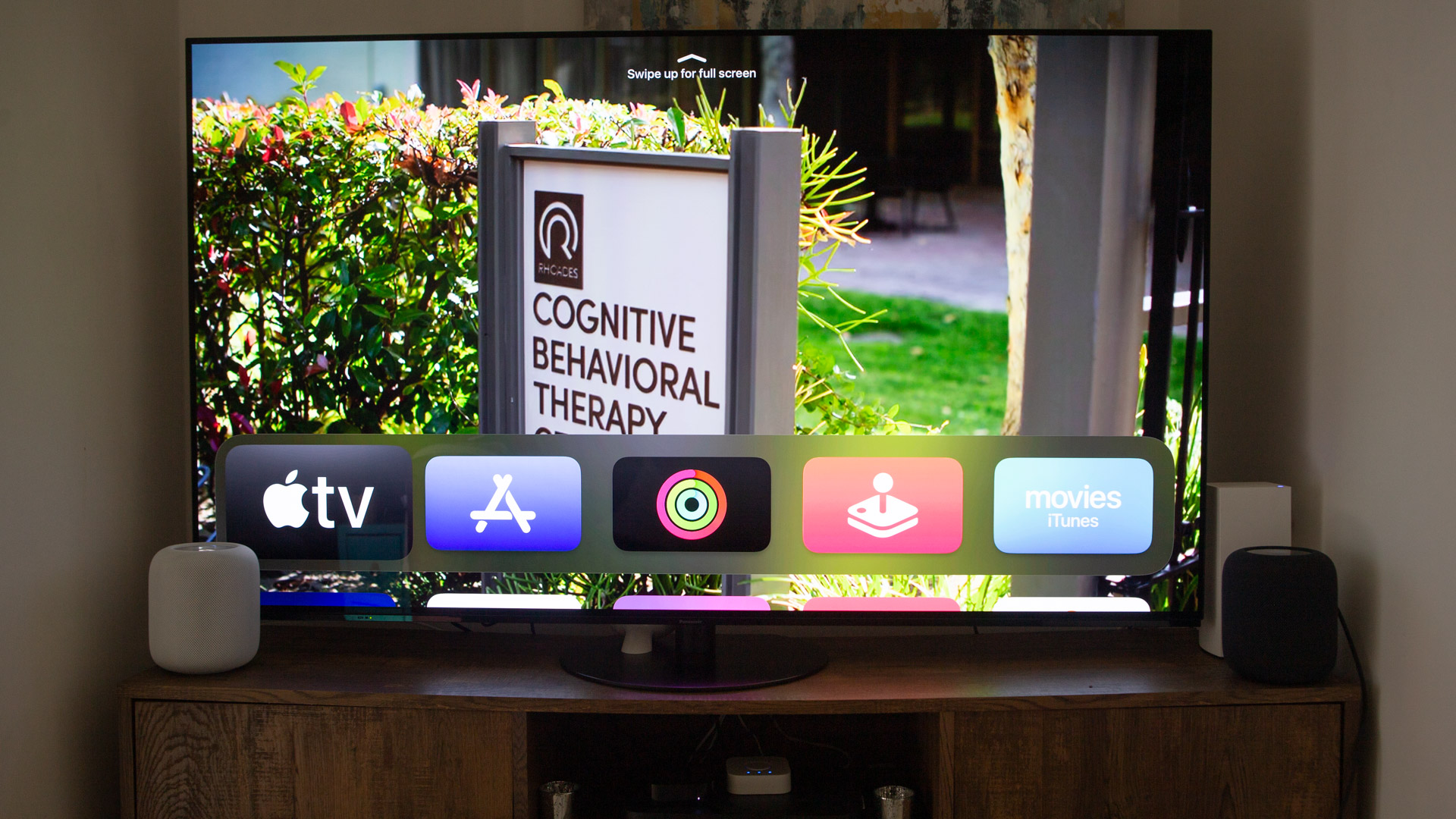
Smart home functionality
The smart home functionality is something that has really expanded for Apple since the launch of the first HomePod. Now, the HomePod second generation is able to offer a much more pivotable role in the home network, connecting to a wider range of accessories and providing much more in terms of automation.
Both HomeKit-compatible and Matter-compatible accessories will connect with the HomePod. That means everything from air conditioners to doorbells, garage doors, thermostats and window blinds can be linked to the Home app and controlled by the HomePod. The list of manufacturers is vast and includes all the brands you would want.
Apple's Home app might have lagged behind the likes of Amazon and Google in previous years but recent updates and the addition of Matter compatibility has seen it gain serious traction. Of course, if you're not an Apple iOS user you will struggle. There's no Android version of the Home app available to start with.
It is possible to play music on the HomePod from an Android device using CloudPlayer, but you're not going to get the full experience from the device. There's no input port for a direct connection and content is only streamed over AirPlay. It's a slight shame that this isn't more accessible, but as the HomePod is designed to be part of the Apple ecosystem, it's possibly no surprise.
If however, you are already bought in to the Apple system, you'll find the HomePod not only fits effortlessly into your system but actually improves it. As someone who uses a mix of voice assistants, I've found myself using the Hey Siri command far more often with the HomePods on hand, and those microphones haven't missed a beat, even with music on.
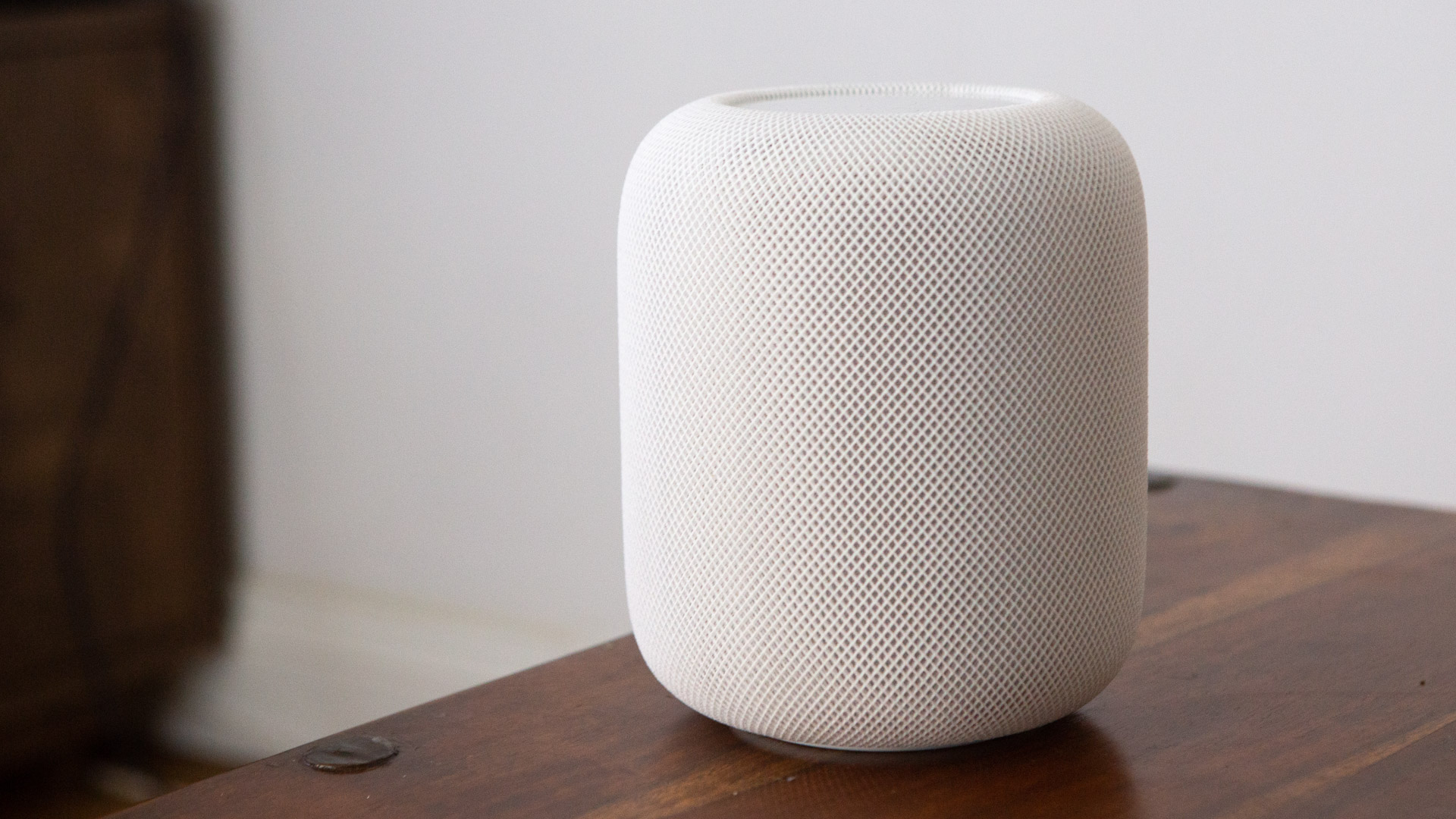
Verdict
I've been really impressed by the performance of the HomePod second generation as both a speaker and a smart home device. I'm very glad the HomePod is back in Apple's lineup, as it really does provide a premium speaker offering for those wanting to listen to lossless music or upgrade their Apple TV experience.
If you're an Apple user already considering a premium smart speaker, I feel that while the HomePod is more expensive than some, the sound quality and functionality justify the extra cost.
The new HomePod really does deliver a great sound for both music and movies. However, the taller build means it won't sit neatly underneath your TV in the same way as a soundbar would, and for the same money, you can get a pretty decent dedicated home cinema system. I'd love to see a soundbar-shaped version of the HomePod or at least a twin pack that shaves £50 off the price.
Without spending a lot more money, you won't get a better all-purpose smart speaker than the HomePod. If you're using an iPhone then having this speaker at home is a great choice.
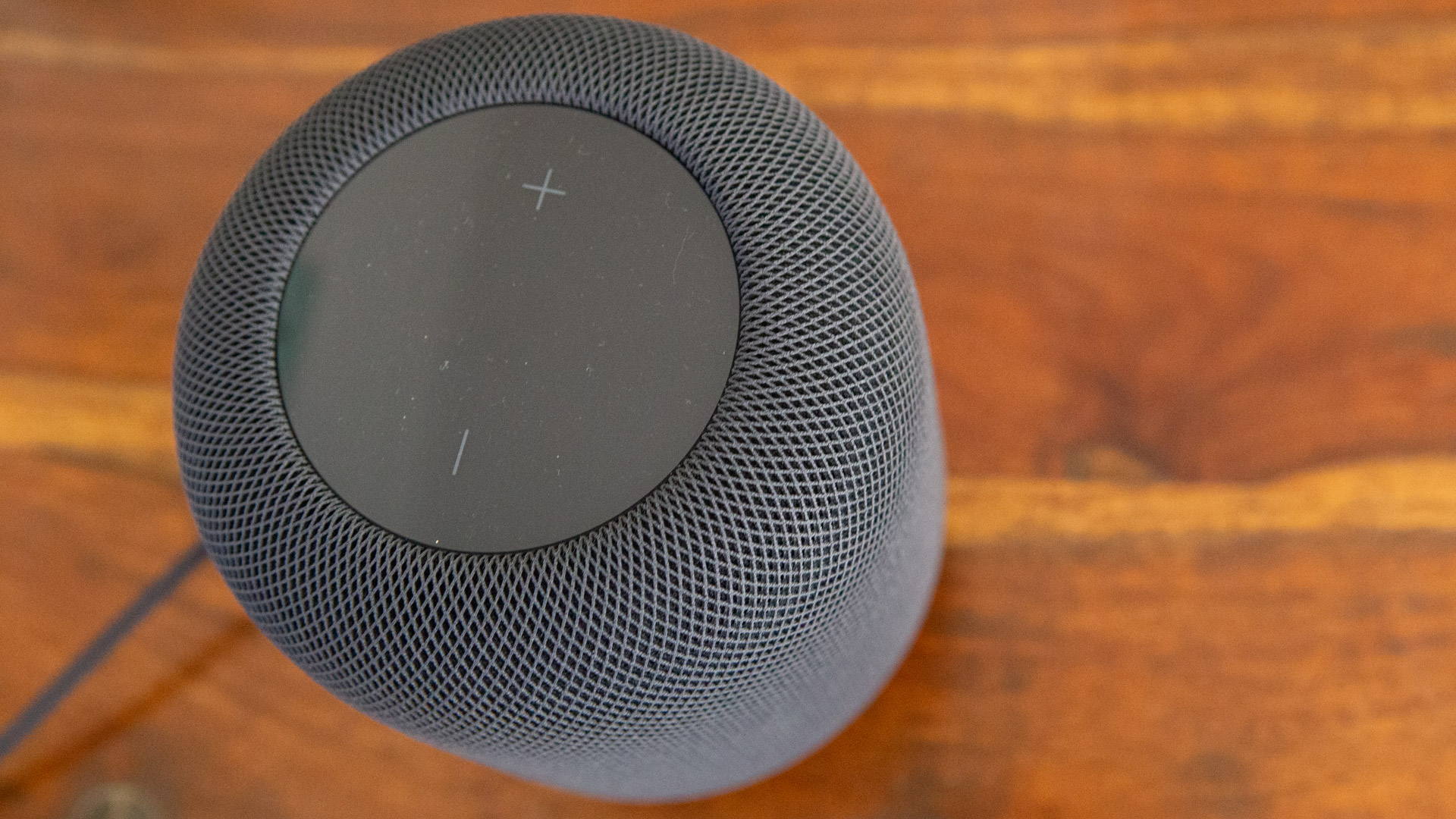
Also consider
If you're not ready to spend nearly £300 / $300 on a speaker – or double that on two – the HomePod mini is a great choice. Priced at just £99 / $99 / AU$149, these are considerably cheaper and smaller. Plus, you can still link them in a stereo pair and connect them to your Apple TV. It's also now been revealed that they also have the temperature and humidity sensors on board, so they can run your automations too.
Sonos provides a couple of solutions that may still be an alternative to the HomePod. The Sonos One is cheaper by around a third and still delivers great sound – though granted, not quite as good as the HomePod. It still offers smart features too, with AirPlay connectivity as well as Google or Amazon voice assistants. Importantly for some, you don't need to be in the Apple ecosystem to set it up.
If you're looking for audio quality, the Sonos Five is the company's flagship offering and delivers a room-filling warm sound that feels very natural as standard. Though you can also tweak the audio yourself with the EQ in the Sonos app.
If on the other hand, your focus is on cinema sound, I would consider a soundbar suck as the Sonos Beam, paired with the Sonos Mini Sub, to really boost that bass. However, once you add that bass unit, the price soon mounts up.

As T3's Editor-in-Chief, Mat Gallagher has his finger on the pulse for the latest advances in technology. He has written about technology since 2003 and after stints in Beijing, Hong Kong and Chicago is now based in the UK. He’s a true lover of gadgets, but especially anything that involves cameras, Apple, electric cars, musical instruments or travel.